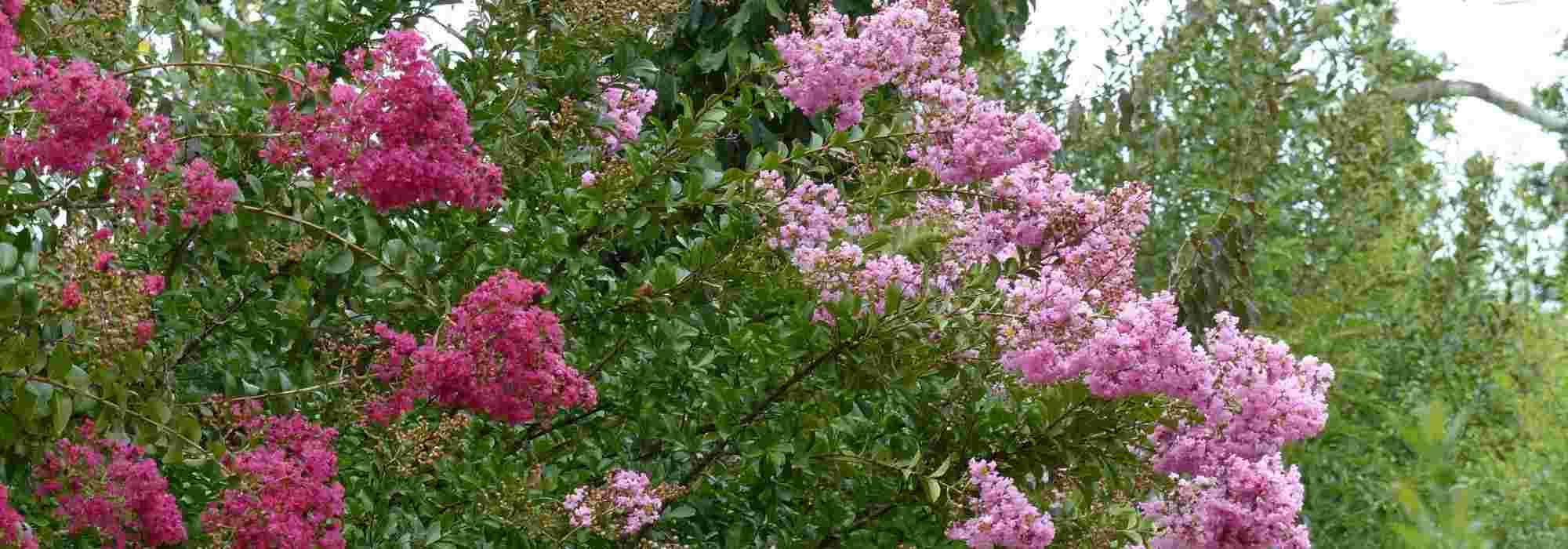
6 late summer flowering shrubs
Our selection of shrubs that flower from mid-August to the end of September
Contents
There are hundreds of varieties of summer-flowering shrubs. While some reward us with their flowering from the very first days of summer, others, which bloom later, are in flower at the end of the season, gently heralding the arrival of autumn.
Here is our selection of 6 flowering bushes from mid-August to the end of September, which will accompany and enhance the end of the summer season.
Their various flowering characteristics (colourful flowers, white, in clusters, in umbels…) will satisfy all tastes and styles of garden.
Vitex agnus-castus ‘Latifolia’, beautiful blue-violet spikes
The Vitex agnus castus ‘Latifolia’ is part of the vitex family, also known as chaste trees or pepper trees. It originates from the poor lands and dunes of the Mediterranean basin.
Its flowering occurs in August-September: it is adorned with magnificent paniculate flowers of a violet-blue hue, about fifteen centimetres long. The flowers exude a fragrance with peppery and balsamic notes and are highly appreciated by insects.
The finely dissected green deciduous leaves also release a peppery aromatic scent when crushed, which is why it is nicknamed the pepper tree. Similarly, the edible fruits, shaped like berries, have a spicy taste, and their benefits have been known since antiquity.
The shrub has a rounded, compact, and bushy silhouette. It reaches a height of 2.5 metres and a spread of 2 metres.
Growing and use in the garden
The growing of vitex is simple, even for beginner gardeners: the shrub requires no watering once well established, is not susceptible to diseases, and its annual pruning, which is optional, will simply help maintain a harmonious shape.
Vitex enjoys sunny situations and thrives in any well-drained soil, even poor, calcareous, or sandy. It is only sensitive to excess moisture, as well as cold and drying winds.
‘Latifolia’ is a more vigorous and hardy variety than the classic Vitex agnus castus. Its hardiness reaches -15°C: it can thus be grown in open ground in the south of France and along the west coast. Elsewhere, cultivation in a sheltered area from cold winds, against a sunny wall, can be considered. Container cultivation to protect it from winter frosts will also be perfectly suitable.
Very decorative, vitex is ideal for a natural-style country hedge, in a border, or as a specimen plant. It is a perfect candidate for seaside gardens, given its resistance to salt spray and drought.
When grown in a large pot, it will beautifully adorn a terrace or a small urban garden.
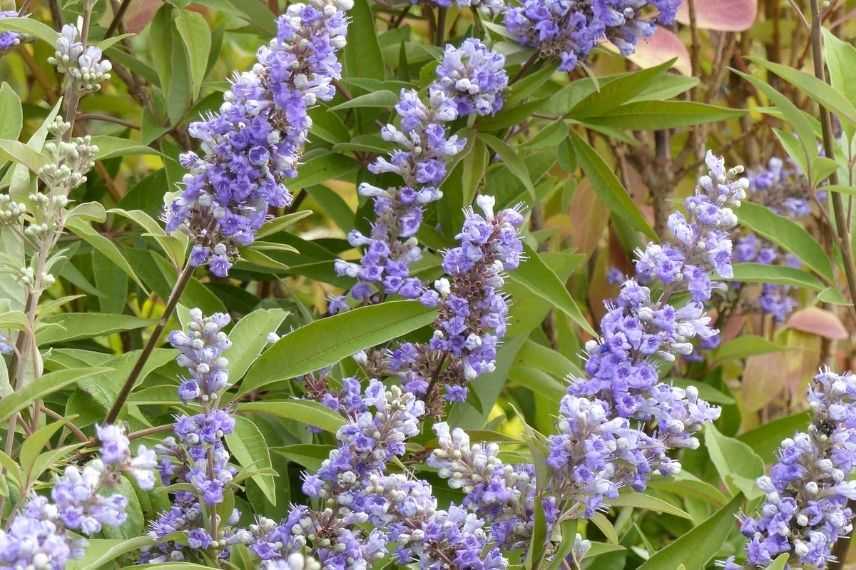
Vitex agnus castus ‘Latifolia’
Bunge's clerodendrum, a fragrant pink flowering.
Clerodendrum or clergy tree is a deciduous shrub native to the tropical regions of Africa and South Asia. Only two varieties are cultivated in our latitudes: Clerodendrum bungei (Bunge’s clerodendrum) and Clerodendrum trichotomum (tree of fortune), both originating from East Asia.
The Clerodendrum bungei flowers in late summer, from August to September-October, while emitting a pleasant floral fragrance. Its cymes gather tiny star-shaped tubular flowers:
- the classic Bunge’s clerodendrum is adorned with delicate bright pink flowers;
- ‘Pink Diamond’ features large dark pink pom-poms, highlighted by variegated green and cream foliage.
Highly melliferous, the flowers attract butterflies and other pollinators, before transforming into beautiful dark blue round fruits.
Growing and using in the garden
Plant clerodendrum in deep, rich, moist but well-drained soil. The shrub dislikes excess: waterlogged soil in winter or soil that is too dry in summer.
Choose a sunny or partially shaded location in the hot, dry climate of southern France. Prefer a sheltered area from strong winds.
Hardy down to -10°C, it can regrow from the stump if its aerial parts have been damaged by frost. In regions with long winters, its small size (less than 2 metres tall and 1 metre wide) allows for pot cultivation, to protect it during the cold season.
Aside from a pruning in late winter to ensure flowering on the new stems of the year, it requires no special maintenance.
Clerodendrum integrates very well at the back of natural flower beds or in free hedges with other bushes.

Clerodendrum bungei ‘Pink Diamond’ and Clerodendrum bungei
Discover other Summer-flowering shrubs
View all →Available in 0 sizes
Available in 1 sizes
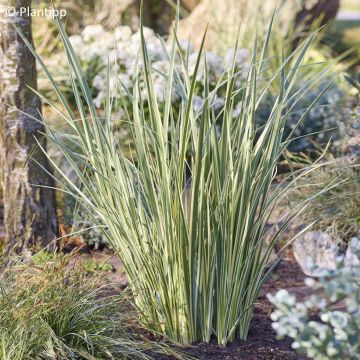
Available in 1 sizes
Available in 1 sizes
Available in 1 sizes
Available in 1 sizes
Available in 2 sizes
Available in 1 sizes
Available in 1 sizes
Available in 1 sizes
Eucryphia intermedia ‘Rostrevor’, an exotic-looking white flowering plant
The Eucryphia intermedia ‘Rostrevor’ is a large shrub native to South America, resulting from a cross-breeding between two wild species.
At the end of summer, from August to September, it is adorned with an abundance of beautiful 4-petalled corolla flowers, measuring 2 to 5 cm in diameter. They display a pure white, highlighted by a heart of stamen with pink-red anthers (the terminal part).
Fragrant, they emit sweet scents of honey and lime tree, equally appreciated by gardeners and pollinating insects.
Its dark green, glossy evergreen foliage allows it to maintain decorative interest even outside its flowering period.
Its columnar habit and fastigiate silhouette (branches tightly pressed against the main stem and oriented towards the top of the plant) add height to the garden, as well as a true exotic touch.
Growing and use in the garden
Growing Eucryphia intermedia ‘Rostrevor’ requires some care to thrive: a rich, organic, acidic soil (do not hesitate to add heather soil), remaining always moist, but well-drained to allow water to escape properly. With its head in the sun and its feet in the cool, it will ensure the most beautiful flowering.
It enjoys sheltered, shaded, or semi-shaded situations, but fears cold, drying winds.
Due to its origins, its ideal climate is mild and rainy. Hardy down to about -10°C, it can be grown in the ground in the mildest southern regions. However, it is sensitive to drought and should therefore be regularly watered during the summer.
Elsewhere, the shrub should be placed in a sheltered position and protected during the winter, or grown in a pot.
Eucryphia intermedia ‘Rostrevor’ can reach over 6 metres in height and 2 metres in spread at maturity, but its slow growth still makes it a good candidate for small urban gardens, sheltered from winds and harsh sunlight.
The shrub will be perfectly showcased when planted alone or in a free hedge, as well as when used as a feature in front of a wall or as a backdrop to a flowering bed. Its base can even be dressed with ground-cover plants.
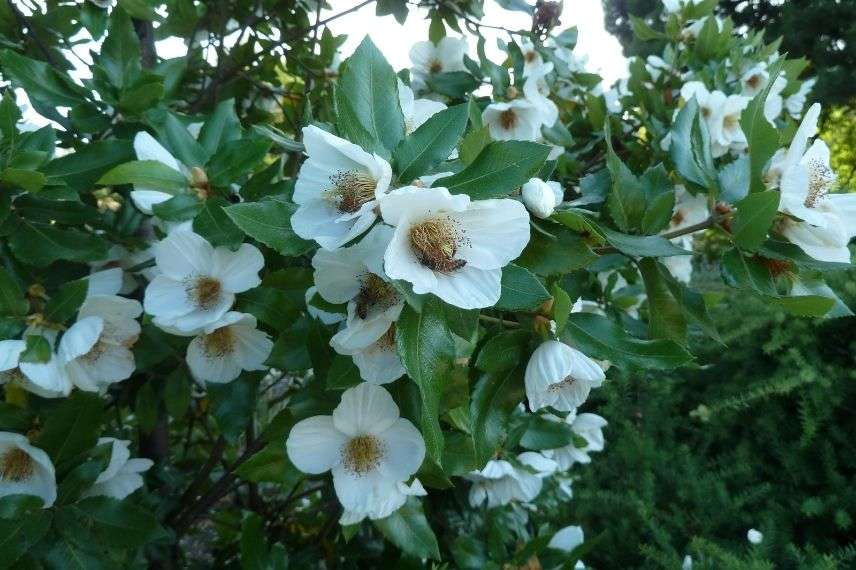
Eucryphia intermedia ‘Rostrevor’ (Photo W. Cutler)
Read also
Pruning of summer-flowering bushesThe Indian lilac, with its frilly, colourful flowers
Indian lilac (Lagerstroemia) or summer lilac are hybrid shrubs, resulting from a cross-breeding of varieties native to China and South Asia.
The abundant flowering reveals beautiful panicles measuring 10 to 20 cm long. The flowers densely clustered are adorned with crumpled and frilled petals, giving the shrub its poetic nicknames “crepe flower tree” or “mousseline flowers”. They unveil a heart of stamen in bright yellow hues.
Among the varieties that bloom in late summer, we can mention:
- Lagerstroemia indica ‘Summer Charm Acoma’, which offers fluffy flowers in immaculate white;
- ‘Saint Emilion’, which produces dazzling carmine pink flowers full of vitality from August to September;
- ‘Souvenir d’Hubert Puard’, which is adorned with delicately undulating flowers in a lovely mauve;
- ‘Souvenir d’André Desmartis’, which delights us with a red tinged towards Indian pink:
- ‘Terre Chinoise’, which offers dark purple hues, almost burgundy.
But the decorative interest of the Indian lilac is not limited to its beautiful flowering. In autumn, its deciduous ornamental foliage takes on a thousand dazzling warm hues before falling. It then allows the spotlight to turn to a trunk whose bark peels, creating delicately coloured marbled patches that illuminate the garden at the end of the season.
Its bushy silhouette and slightly twisted branches grow in coppice (the young shoots emerge from the stump) and lend themselves well to pruning.
Growing and using in the garden
To grow the Indian lilac, provide it with rich, moist soil that does not retain water in winter. It thrives in a sunny and warm position to encourage beautiful flowering, sheltered from prevailing winds.
It is in the gardens of the south-west, offering a warm and humid climate, that it will thrive best, but this bush can be grown in most of our regions. Hardy down to -15°C, it should be protected from frost during its early years.
The Indian lilac is easy to pair in the garden and adapts to all styles and inspirations: exotic ambiance, romantic bed with soft hues or very colourful version,… It will be highlighted when planted alone, but also in a free hedge.
The smaller varieties will easily fit into small gardens, grown in pots.
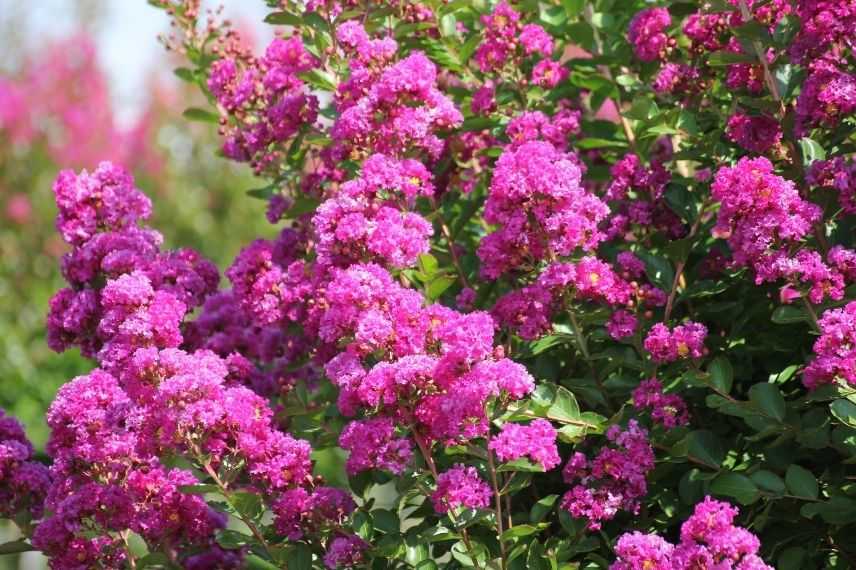
Lagerstroemia indica ‘Violet d’été’
Angelica tree, a wild and airy style
Aralia elata is a bush native to Asia, also known as “Japanese angelica tree” or “Chinese angelica” due to its origins and foliage reminiscent of the plant of the same name.
Flowering occurs in late summer, from August to September, displaying large panicles of 30 to 60 cm, which gather hundreds of small flowers. This light flowering is adorned with a beautiful cream white and emits a subtle fragrance.
- Aralia elata ‘Golden Umbrella’ features variegated green foliage with yellow margins, beautifully contrasting with the light umbel flowers;
- the tall ‘Silver Umbrella’ (almost 6 metres high) offers variegated green foliage with white margins, serving as a backdrop for its graceful floral umbels.
The flowers, highly appreciated by pollinating insects, give way to decorative fruits, which in turn are favoured by birds.
Its elegant silhouette, composed of large, dissected leaves borne on long, slender branches, gives it a lush and exotic appearance. Its spreading habit also lends it the look of a large parasol.
Growing and using in the garden
Grow Aralia elata in rich, light, fresh, or even moist soil. They prefer sunny or partially shaded exposures in the hot and dry regions of southern France, as they are wary of scorching sun. They will thrive in areas sheltered from prevailing winds to maintain the beauty of their foliage.
Their flowering and bright deciduous foliage will bring light to the shaded areas of the garden. Their large size and rapid growth due to their suckers (new root shoots) make them perfect candidates for quickly greening a new area.
They require very little maintenance: pruning is not essential, and these vigorous and hardy bushes, tolerating temperatures below -15°C, are not susceptible to diseases.
The angelica trees create a true jungle atmosphere. Whether isolated or combined with other trees, they will showcase their beauty in the garden.
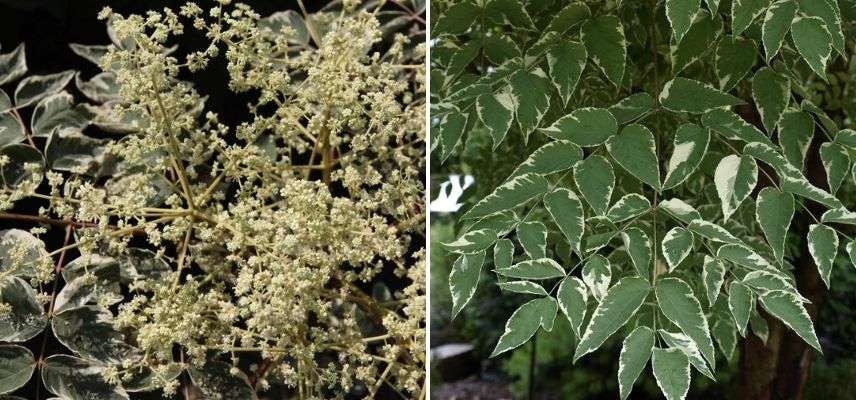
Flowers and leaves of Aralia elata ‘Silver Umbrella’ (Photo left: Clemson Extension Home; right: Denolf)
Heptacodium miconioides, highly decorative with its evolving colours
Heptacodium miconioides, also known as Heptacodium jasminoides, is an elegant shrub native to China, still relatively rare in gardens despite its many advantages.
At the end of summer, from August onwards, it adorns itself with delicate star-shaped flowers with 5 sepals, grouped in panicles at the tips of the branches. This white flowering gives way to calyces in shades of pink, then red.
Fragrant, the starry flowers emit a scent reminiscent of jasmine flowers and delight pollinating insects.
The glossy green deciduous foliage turns yellow-red in autumn before falling and revealing a decorative marbled bark in beige and pink hues, which exfoliates in orange flakes with age.
Its quite imposing size (up to 5 metres in all directions in our climates) makes it almost a small tree, and its bushy, open, and spreading silhouette adds a lot of volume to the garden.
Growing and garden use
Heptacodium miconioides enjoys sunny or partially shaded locations. Not demanding, it is easy to cultivate in all soils, even dry and slightly calcareous.
It requires little care, apart from watering during particularly dry and hot summers and, possibly, maintenance pruning in early spring, to better appreciate the aesthetics of its bark.
Very hardy, resistant to sea spray, pollution, and diseases, it will adapt to many gardens. Plant it in a free hedge with other closely related bushes (honeysuckles, abelias,…) or in a border with perennials or as a specimen plant, to highlight all its decorative qualities.
- Subscribe!
- Contents
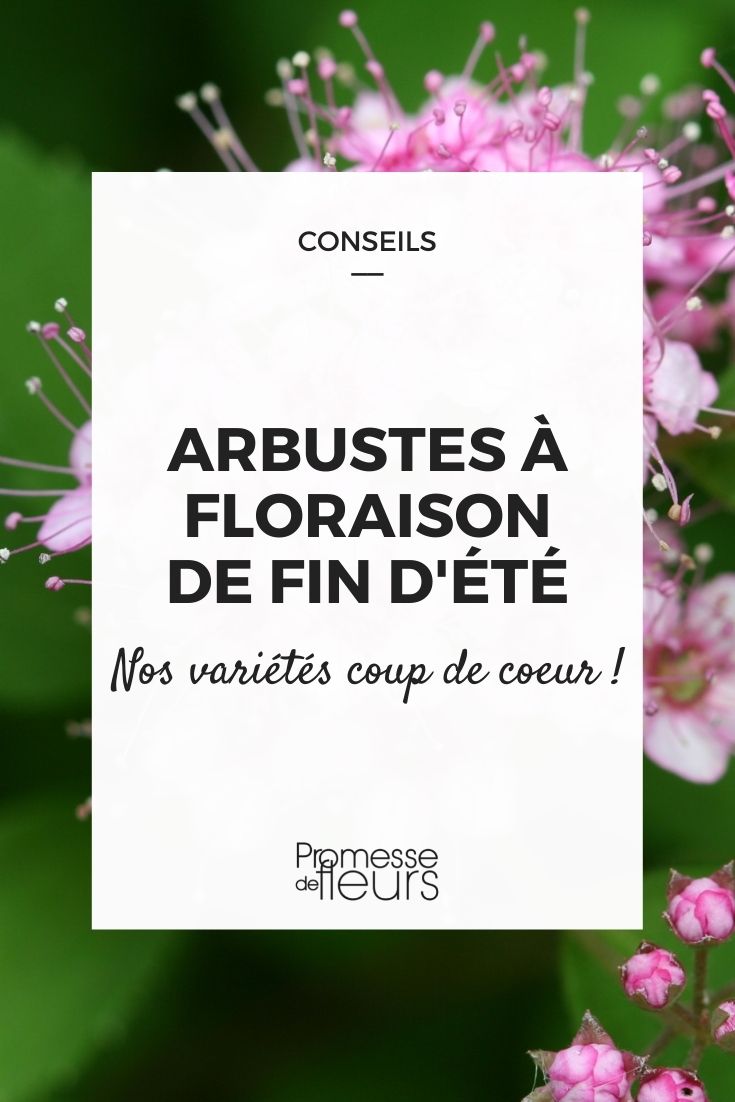































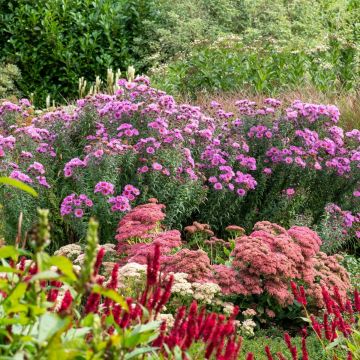
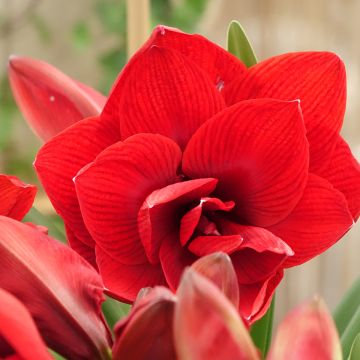
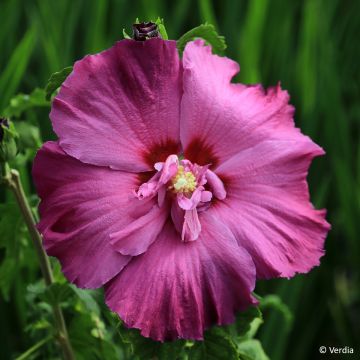
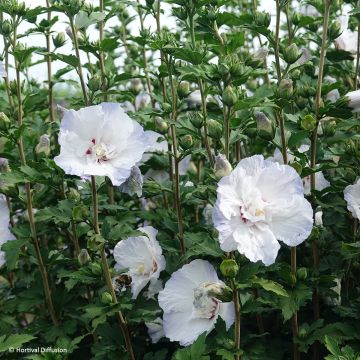
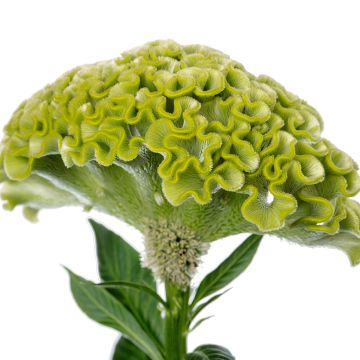
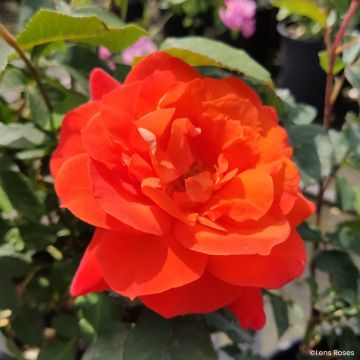
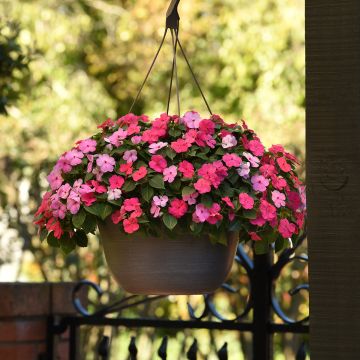

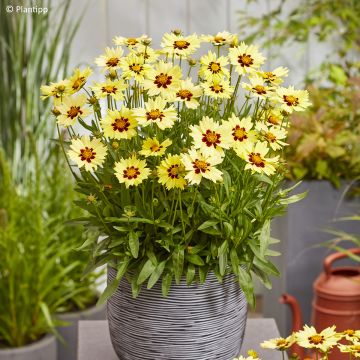
Comments